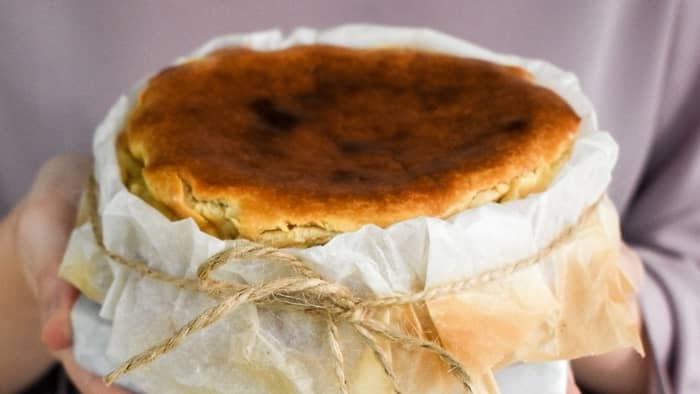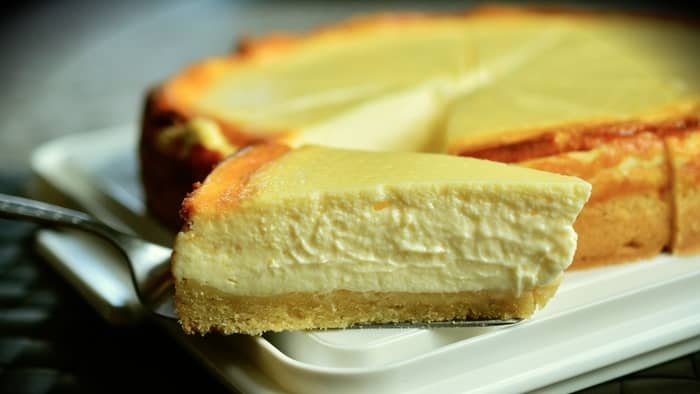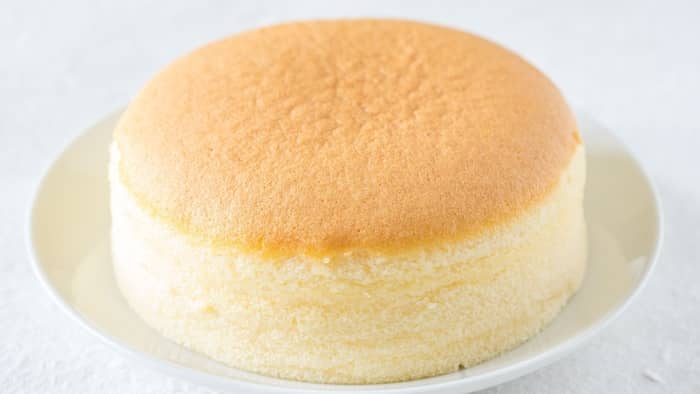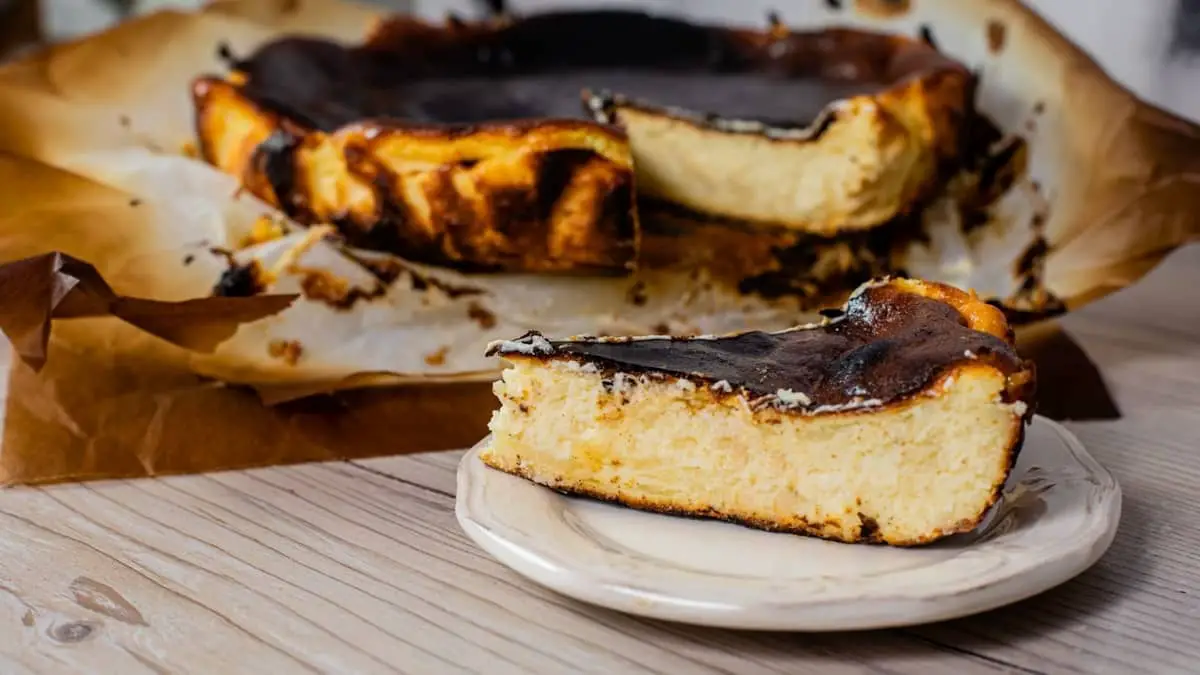By Lindy Van Schalkwyk, last updated on March 11, 2022
Why does my cheesecake have a weird texture? These can be extremely frustrating to figure out, let alone fix. Today, we look at mastering texture!
We will not only discuss what the biggest texture flaws are for cheesecakes but exactly what causes them and how to avoid them completely.
Why Does My Cheesecake Have A Weird Texture? What Texture Should A Baked Cheesecake Be?
There are different styles of cheesecakes that greatly influence the texture of the cheesecake. For the most part, cheesecake textures should always be smooth and lump-free. The degree of creaminess and density is what mostly varies.
For the classic New York-style cheesecake, you want the cheesecake to be firm and dense. But, a Japanese-style cheesecake will be unbelievably spongy and air-like.
Furthermore, baked cheesecakes and unbaked cheesecakes will also have different textures. Unbaked cheesecakes are very creamy and not dense at all. Baked cheesecakes will always have denser textures thanks to the eggs in the recipes.

Why Does My Cheesecake Have A Weird Texture?
So, what exactly are these weird unwanted textures you might be looking to avoid? When making a cheesecake you want to avoid getting the following textures:
- Grainy texture
- Lumpy texture
- Rubbery texture
- Dense texture
So, here are some insights on why does my cheesecake has a weird texture.
Why Does My Cheesecake Have A Grainy Texture?
The most common reason for a grainy texture is when your cheesecake has been overbaked.
When a cheesecake is baked longer than it should be, the eggs overcook. This means that the cheesecake curdles. When eggs overcook, they lose moisture which causes the proteins in the egg to contract. This gives the cheesecake that distinct grainy texture and an off-putting flavor!
Furthermore, over baking cheesecake have other consequences. Very often they will crack because of the extreme loss of moisture.
So, How Do I Avoid This?
The best way to avoid over baking a cheesecake is by using the correct baking temperatures and baking times. It’s as simple as that! The best temperature to bake a cheesecake at is between 320-350°F (160-180°C). And, an average 10-inch cheesecake will bake between 40-60 minutes, depending on the thickness of the cake.

You can check whether or not your cheesecake has been fully baked by looking at the middle. The inner 1 to 2-inches of the cake should still be jiggly.
If all still fails, your oven’s temperature gauge might be a little off, so be sure to have that checked out! You can also use an internal oven thermometer that accurately measures the temperature inside the oven.
Why Does My Cheesecake Have A Weird Texture That Isn’t Smooth?
There can be several reasons why your cheesecake isn’t smooth! This is usually because ingredients weren’t properly mixed, the cheesecake didn’t evenly bake, or that you have a grainy texture due to over baking.
How To Avoid This?
When it comes to the ingredients you use, always make sure they are completely softened (cream cheese and butter especially) and at room temperature. This makes the ingredients mix a lot better and will create a completely smooth batter, which will result in a smooth cheesecake.
You can also use a water bath to help your cheesecake bake evenly, When it bakes evenly, it won’t create over-baked textures in one area and under-baked textures in another. This technique will also you if you have unpredictable or unstable oven temperatures.
And again, as we have discussed above, to prevent a grainy texture, just monitor the doneness of your cheesecake.

Rubbery Textures – Why Does My Cheesecake Have A Weird Texture?
A rubbery cheesecake is not the most common cheesecake mistake you might come across, but when you do, it is a complete nightmare!
The biggest reason for rubbery cheesecakes is that the cheesecake batter was overmixed! When over mixing a batter, it reduced the air pockets. So, if you remove them, essentially the batter deflates and compresses.
Another reason for dense rubbery cheesecake is incorrect ratios being used. If the recipe contains too much flour, powdered sugar, or even eggs, it will lead to this unappealing texture.
How To Prevent Rubbery Cheesecake Textures
First, make sure to only mix the ingredients until they are just combined. This is also easier to do when the ingredients are softened and at the same temperatures.
Furthermore, always choose a recipe from a trusted website, like ours! You can also compare your recipe to that on other sites.

Why Does My Cheesecake Have A Weird Texture? The Best Tips And Tricks To Getting The Perfect Cheesecake Texture!
Here is a breakdown on achieving the following textures for cheesecakes. By following our simple tips for each, you are all but guaranteed to be successful!
Smooth And Creamy Cheesecake
Be sure to use the regular Philadelphia brand cream cheese. Don’t use the fat-free or less-fat option! Rather go for the regular full-fat one. They will give you the smoothest and creamiest cheesecakes.
The perfect cheesecake needs whole eggs, which means both the yolk and the white. Using only one or the other will completely change the texture.
Light And Airy Cheesecake
If you want the cheesecake to be super light and airy, it’s key to use a recipe that includes whipping the egg whites and folding them into the cheesecake batter before baking.
Another way to make cheesecake airy is by whipping the cream cheese until it becomes light and fluffy.

Velvety, Smooth Texture
The addition of cream gives the cheesecake a velvety smooth texture. But, don’t use too much. Too much cream will affect the texture of your cheesecake and overpower the tangy flavors of the cream cheese.
Tangy Cheesecake
As strange as it might sound when it comes to cheesecake you do want a certain amount of tanginess to it! The tanginess helps cut through the creaminess and sweetness of the cheesecake, and makes it lighter in a way! So, to add a little tanginess, include some sour cream or buttermilk in the recipe.
Why Does My Cheesecake Have A Weird Texture? Wrapping It Up
No matter how daunting baking a cheesecake might sound, never give up! Once you find the perfect recipe and method combo, you’ll be baking these with ease! If you found this article insightful, be sure to let us know!
FAQs

Lindy Van Schalkwyk is a culinary specialist with a background in Advanced Cooking, Advanced Pâtisserie, Media Communications and Nutrition. She has gained invaluable experience in the culinary industry having worked in some of the top restaurants in Africa in 2016 and 2017. Her expertise in nutrition has enabled her to develop recipes for special dietary needs. In 2018, Lindy began working in the Food Media industry, focusing on recipe development, recipe writing, food writing and food styling.

